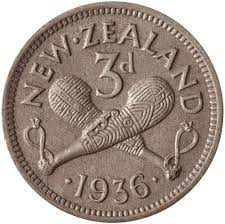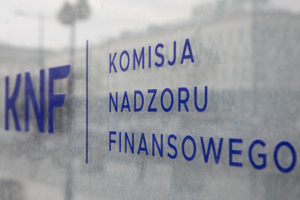Reserve Bank of New Zealand - RBNZ functions and role
New Zealand is one of the most developed economies in the world. The country is one of the members of the OECD. In turn, the New Zealand dollar is one of the most liquid currencies in the Asia-Pacific region. According to the data collected by Bank for International Settlements The New Zealand dollar ranks 10th among the most liquid currencies in the world. The value of the New Zealand dollar is a product of the strength of the economy, the fiscal policy of the government and the monetary policy of the central bank. The Central Bank of New Zealand is the guardian of the stability of the New Zealand dollar. In this article, we'll tell you more about the story Reserve Bank of New Zealand (RBNZ).
History of currency in New Zealand
In the XNUMXth century, New Zealand was a British colony. Initially, the colony was able to pay with both British and foreign currency. The monetary environment regulated Imperial Coinage Act enacted in 1816. From 1870 in line with the new Imperial Coinage Act the sole legal tender was therefore the British pound. However, the slow independence of the colony from the metropolis brought political pressure to create its own currency.
In the interwar period, The New Zealand Numismatic Society suggested that New Zealand's new currency should adopt the decimal system. In the end, however, the concept of mapping the British monetary system prevailed. The coins of the new currency had the same weight, size and denomination as British coins. According to The Coinage Act of 1933, a new currency was introduced - the New Zealand pound. The British Pound ceased to be legal tender on February 1, 1935. As a result, New Zealand was the last dominion to introduce its own currency.
After just over thirty years, the decimal system (Decimal Currency Act of 1964) was introduced. In the second half of the 1967s, the currency was renamed from the New Zealand pound to the New Zealand dollar. At the same time, the New Zealand dollar became pegged to the US dollar, while the former currency, the pound, was pegged to the British pound. Since 1, at a pegged exchange rate, $ 1,37 has been worth US $ 1985. The big change came in XNUMX, when the central bank allowed a liquid currency regime to be applied. From now on, the value of the currency was determined by market forces of supply and demand.
Check the quotation for the New Zealand dollar - NZD / USD
History of the central bank
The history of the central bank begins with the introduction of The Coinage Act of 1933. Pursuant to the provisions of the legal act, the bank started operating on August 1, 1934. At the beginning, as in the case of the interwar Bank of Poland, private persons could have been shareholders. However, from 1936, the bank's sole shareholder may have been the New Zealand government. In accordance with the law passed by the New Zealand Parliament (The Reserve Bank of New Zealand Act of 1989), the RBNZ is an independent body from the government. This was to ensure that the government would not interfere in the monetary policy of the central bank. The RBNZ also acts as a lender of last resort. In the event of a financial market instability, the central bank could act as a liquidity provider.
Goals of the RBNZ
The main goal of the Reserve Bank of New Zealand is to ensure price stability. The central bank tries not to cause too much inflation or deflation (fall) in the economy. The RBNZ's inflation target is 2%. At the same time, the central bank allowed for XNUMX% volatility up and down. Keeping an eye on the inflation target sometimes requires the RBNZ to change interest rates. Their increase is aimed at reducing the inflation rate, which indirectly supports the "strength" of the New Zealand dollar. In the event of a drop in interest rates, the central bank tries to "weaken" the dollar and stimulate the New Zealand economy. The RBNZ is also responsible for ensuring the stability of the financial sector, including by using open market operations (e.g. repo or reverse repo transactions) and introducing market regulations. The Central Bank of New Zealand controls the level of interest rates, the so-called Official Cash Rete (OCR) which is audited seven times a year. In 2021, inflation significantly exceeded the permissible fluctuation band, as a result of the New Zealand central bank was forced to raise interest rates. Currently, the OCR rate has been increased to 0,5%.
A side function of the RBNZ is also the coordination of monetary policy with international institutions (in agreement with the federal government). Another function is statistical activity. Through it, the central bank collects, aggregates and publishes information about the New Zealand financial market.
In addition to these activities, the central bank also acts as a supervisor of banks operating in New Zealand. In 2020, the RBNZ controlled 27 banks. At the same time, the bank also supervises the payment system in the country. In 2007, the New Zealand parliament decided to extend the powers of the central bank. The powers relating to the supervision of construction associations, credit unions, insurers and other financial companies have been extended.
RBNZ authorities
A very important organ of the Central Bank of New Zealand is the so-called Leadership Team, which is responsible for the implementation of the RBNZ vision. This body includes:
- Adrian Orr - as Governor,
- And 6 Governor's assistants.
Adrian Orr has been the Chairman of the New Zealand Central Bank since March 2018. In 1985 he graduated from the University of Leicester. For three years after graduation, he worked in Great Britain in such positions as: lecturer at City University Business School in London. In 1988, Adrian returned to New Zealand and began working as a researcher at the New Zealand Institute of Economic Research. In 1992, Adrian Orr moved to France where he began working as an economist at the OECD (Organization for Economic Cooperation and Development). After three years, Orr returned to New Zealand, where he managed a team of economists at RBNZ for two years. In the following years, he performed various functions both on the private market (Westpac Banking Corporation) and on the public market. For almost 11 years he worked in the state fund - New Zealand Superannuation Fund.
The Central Bank of New Zealand also has extensive internal structures. According to the data published by the RBNZ, the central bank consists of thirteen departments (including supervision, data and statistics, financial market).
It is a very important organ MPC (Monetary Policy Committee), which is responsible for the conduct of monetary policy by the central bank. It consists of:
- Adrian Orr - Governor,
- Geoff Bascand - General Manager responsible for financial stability,
- Christian Hawkesby - responsible for financial markets and banking,
- Young Ha - chief economist of the central bank.
Summation
The history of the central bank dates back to the first half of the 80s. Initially, the central bank was to maintain the exchange rate against the British pound and then against the US dollar (fixed exchange rate regime). Since the mid-10s, the New Zealand dollar has been a liquid currency whose rate is set on the foreign exchange market. The RNBZ is now tasked with keeping an eye on the inflation target, maximizing employment, and supporting the growth of the New Zealand economy. The central bank is also committed to maintaining the good reputation of the New Zealand dollar, which is currently the XNUMXth most liquid currency in the world.






















![Forex Club – Tax 9 – Settle tax on a foreign broker [Download the Application] Forex Club - Tax 9](https://forexclub.pl/wp-content/uploads/2024/02/Forex-Club-Podatek-9-184x120.jpg?v=1709046278)
![Trading View platform – solutions tailored to the needs of traders [Review] trading view review](https://forexclub.pl/wp-content/uploads/2024/03/trading-view-recenzja-184x120.jpg?v=1709558918)
![How to connect your FP Markets account to the Trading View platform [Guide] fp markets trading view](https://forexclub.pl/wp-content/uploads/2024/02/fp-markets-trading-view-184x120.jpg?v=1708677291)
![How to invest in ChatGPT and AI? Stocks and ETFs [Guide] how to invest in chatgpt and artificial intelligence](https://forexclub.pl/wp-content/uploads/2023/02/jak-inwestowac-w-chatgpt-i-sztuczna-inteligencje-184x120.jpg?v=1676364263)




![Izabela Górecka – “Success on the market depends not only on knowledge, but also on emotional stability” [Interview] Izabela Górecka - interview](https://forexclub.pl/wp-content/uploads/2024/04/Izabela-Gorecka-wywiad-184x120.jpg?v=1713870578)
![WeWork – the anatomy of the collapse of a company valued at $47 billion [WeWork, part II] wework bankruptcy story](https://forexclub.pl/wp-content/uploads/2024/04/wework-bankructwo-historia-184x120.jpg?v=1711729561)
![Adam Neumann – the man who screwed up Softbank [WeWork, part AND] adam neumann wework](https://forexclub.pl/wp-content/uploads/2024/04/adam-neumann-wework-184x120.jpg?v=1711728724)




![The most common mistakes of a beginner trader - Mr Yogi [VIDEO] Scalping - The most common mistakes of a beginner trader - VIDEO](https://forexclub.pl/wp-content/uploads/2024/03/Scalping-Najczestsze-bledy-poczatkujacego-tradera-VIDEO-184x120.jpg?v=1711601376)
![Learning patience: No position is also a position - Mr Yogi [VIDEO] Scalping - Learning patience - No position is also a position - VIDEO](https://forexclub.pl/wp-content/uploads/2024/03/Scalping-Nauka-cierpliwosci-Brak-pozycji-to-tez-pozycja-VIDEO-184x120.jpg?v=1710999249)
![When to exit a position and how to minimize losses - Mr Yogi [VIDEO] Scalping - When to exit a position and how to minimize losses - VIDEO](https://forexclub.pl/wp-content/uploads/2024/03/Scalping-Kiedy-wyjsc-z-pozycji-i-jak-minimalizowac-straty-VIDEO-184x120.jpg?v=1710336731)





















Leave a Response